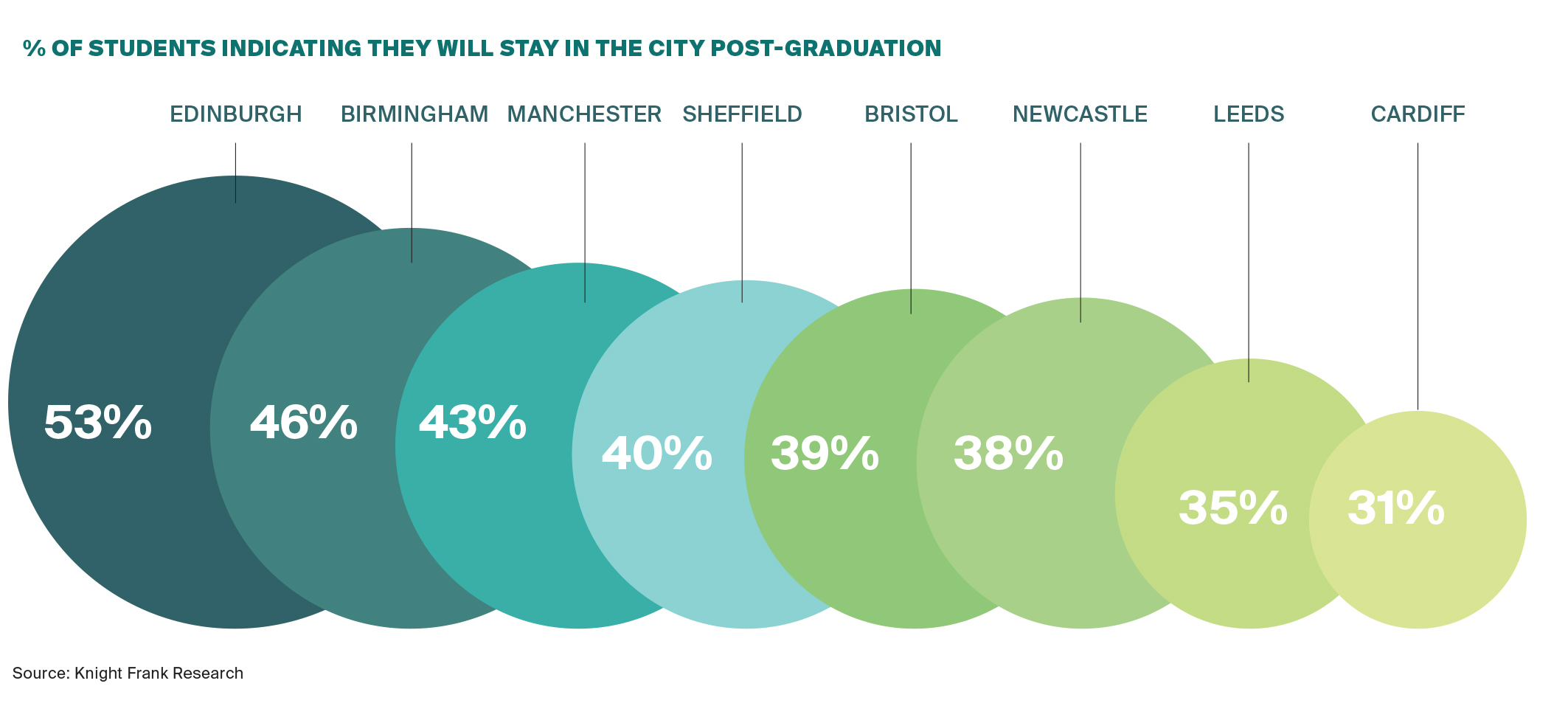Building a Pathway for Growth
The attributes of location and place can be hugely contributory in supporting the growth of an innovation ecosystem, essential to future real estate development. What are the foundations that enable innovation and how advanced are the UK cities along this path?
4 minutes to read
One principal objective of national and city authorities in recent years has been to establish better relationships between education, real estate and industry.
The creation of a pathway from education to employment is viewed as a primary objective in helping to retain talent in the regions, encourage inward investment and aid the development of innovation clusters. Examples of collaboration between public and private organisations across the UK cities are rising, demonstrative that traditional barriers are being overcome and infrastructure is being built that is supportive of ongoing future growth.
Education is the backbone, but retention is the goal
A high quality and relevant skill set among a labour force is fundamental in determining the long-term success of a city, with the availability of the best performing graduates a key factor. Knight Frank research shows that the UK cities are producing a large number of graduates, particularly in the STEM disciplines but now crucially, retention rates are improving. The Knight Frank 2021 Student Accommodation Survey reveals higher than average graduate retention rates across the main UK cities.
The Challenge?
The most talented individuals will only stay in the same city as their university if there are sufficient career opportunities. It is important for cities to develop a mutually virtuous community in which the local labour pool is fully invested and engaged. Talent attraction strategies must therefore cater to the needs of the innovation economy, which prioritizes creativity, entrepreneurial networks and business start-up support. This creates a “sticky” environment that encourages existing talent to stay and new talent to arrive.

Innovation: Laying the Foundations of Growth
Innovation is an essential driver of long-term economic growth required for a well functioning real estate market, generating new occupier activity and attracting investment and wealth. The concept of innovation is simple. Knowledge drives innovation, innovation drives productivity, and productivity drives economic growth. And increasingly the influence of innovation is being understood for its contribution to healthy tenant demand, robust rental levels, and healthy capital value even during times of crisis. Cambridge has set the template. Globally renowned for its university and extensive research foundation, the city has registered stable yields and rental growth during the Global Financial Crisis (GFC)and Covid-19 pandemic.
‘Innovation’ – The Core Factors
INNOVATION INFRASTRUCTURE: universities, research institutions, start-up-accelerators, and funding bodies are fundamental to innovation success. Factors such as the number of UN Sustainable Development Benchmark 9 Universities, and respective Industry Income Scores have been factored into this component; assessing how well academia collaborates with industry to monetise research and create spill-overs in the community.
MOTIVATION TO INNOVATE: quality of life factors (e.g. happiness) which contribute to retention of a highly skilled, talented, and motivated labour force.
START-UP COMMUNITY: analyses the strength of grassroots, entrepreneurial community and their activities. Expanding on our Active Capital research, the Knight Frank UK Cities Innovation Index examines the key factors underpinning propensity to innovate, to explore which cities have strong growth foundations and the greatest prospect for achieving resilience.
UK Cities Innovation Index
The index has combined 32 variables and over 1,200 data points across 39 major regional UK cities. Using principle component analysis, 12 metrics were identified as statistically significant drivers of innovation. These were then clustered into three core factors a) Innovation infrastructure b) Motivation to innovate; and c) Startup community, generating an overall innovation score and rank.

Key Findings
Overall, Edinburgh topped our UK cities index by a considerable margin, thanks to its innovation infrastructure providing excellent academic foundations. It possesses two globally renowned universities (University of Edinburgh and Edinburgh Napier) benchmarked against the Sustainable Development Goals 9 and 11, indicating high level of patent generation, spin-off company formation, and high research income from industry. Alongside this, it has a high number of research institutions and biomedical funding bodies such as Welcome Trust Centre for Cell Biology and Royal College of Physicians, attracting significant investment (ca. $3bn since 2015).Glasgow ranked 2nd, again with excellent innovation infrastructure, with three universities benchmarked against global standards (Glasgow Caledonian, University of Strathclyde, and University of Glasgow). It also possesses a strong start-up community, ranking highly across national rankings of entrepreneurial ecosystems. Individually, Newcastle scored highly in terms of its innovation infrastructure, with a high number of research institutions located in the city, attracting funding of .ca $1.4bn since 2015.
Download UK Cities 2022